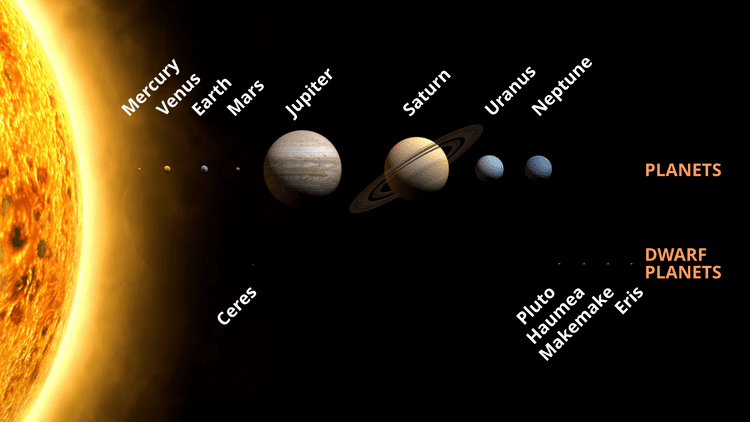 | ||
The following outline is provided as an overview of and topical guide to the Solar System:
Contents
- Regions and celestial objects of the Solar System
- Location of the Solar System
- Structure and composition of the Solar System
- History of the Solar System
- Discovery and exploration of the Solar System
- Formation and evolution of the Solar System
- References
Solar System – gravitationally bound system comprising the Sun and the objects that orbit it, either directly or indirectly. Of those objects that orbit the Sun directly, the largest eight are the planets (including Earth), with the remainder being significantly smaller objects, such as dwarf planets and small Solar System bodies. Of the objects that orbit the Sun indirectly, the moons, two are larger than the smallest planet, Mercury.
Regions and celestial objects of the Solar System
Location of the Solar System
Structure and composition of the Solar System
History of the Solar System
History of the Solar System
Discovery and exploration of the Solar System
Discovery and exploration of the Solar System –
Formation and evolution of the Solar System
Formation and evolution of the Solar System –
References
Outline of the Solar System Wikipedia(Text) CC BY-SA
